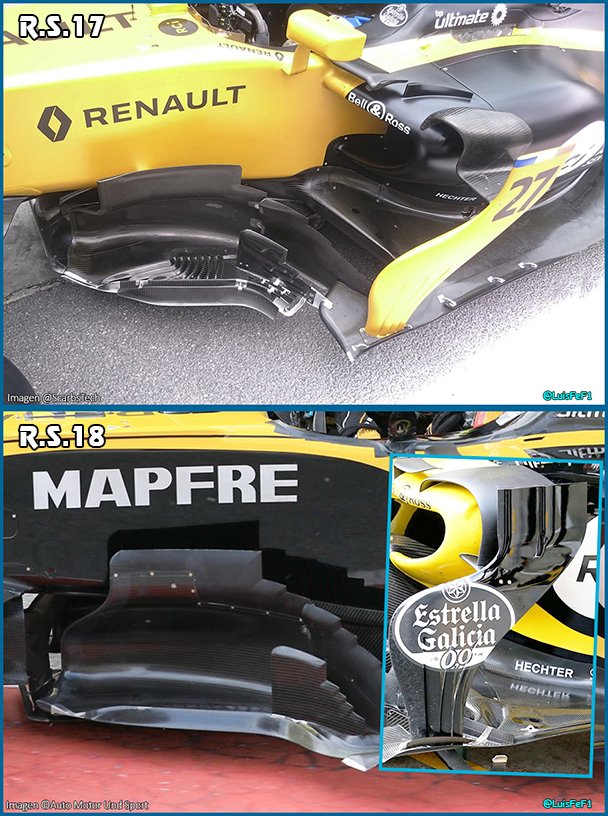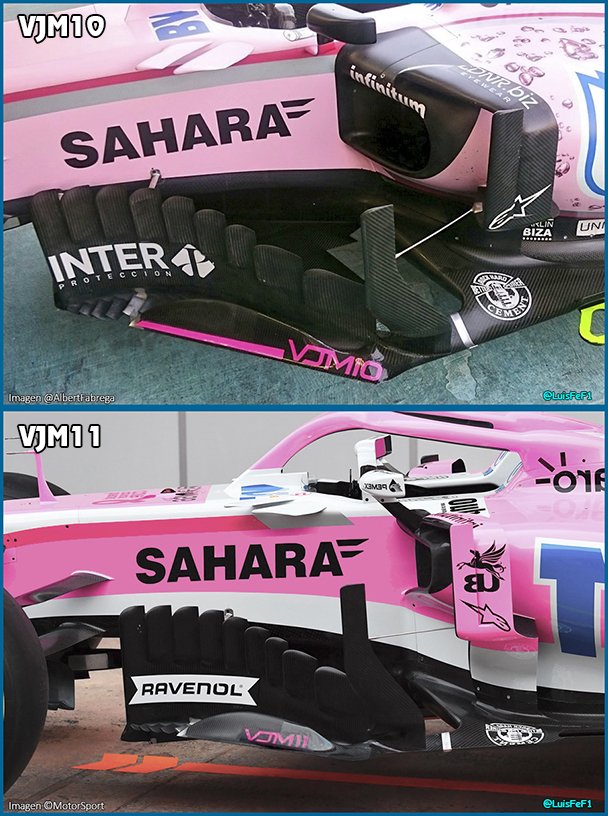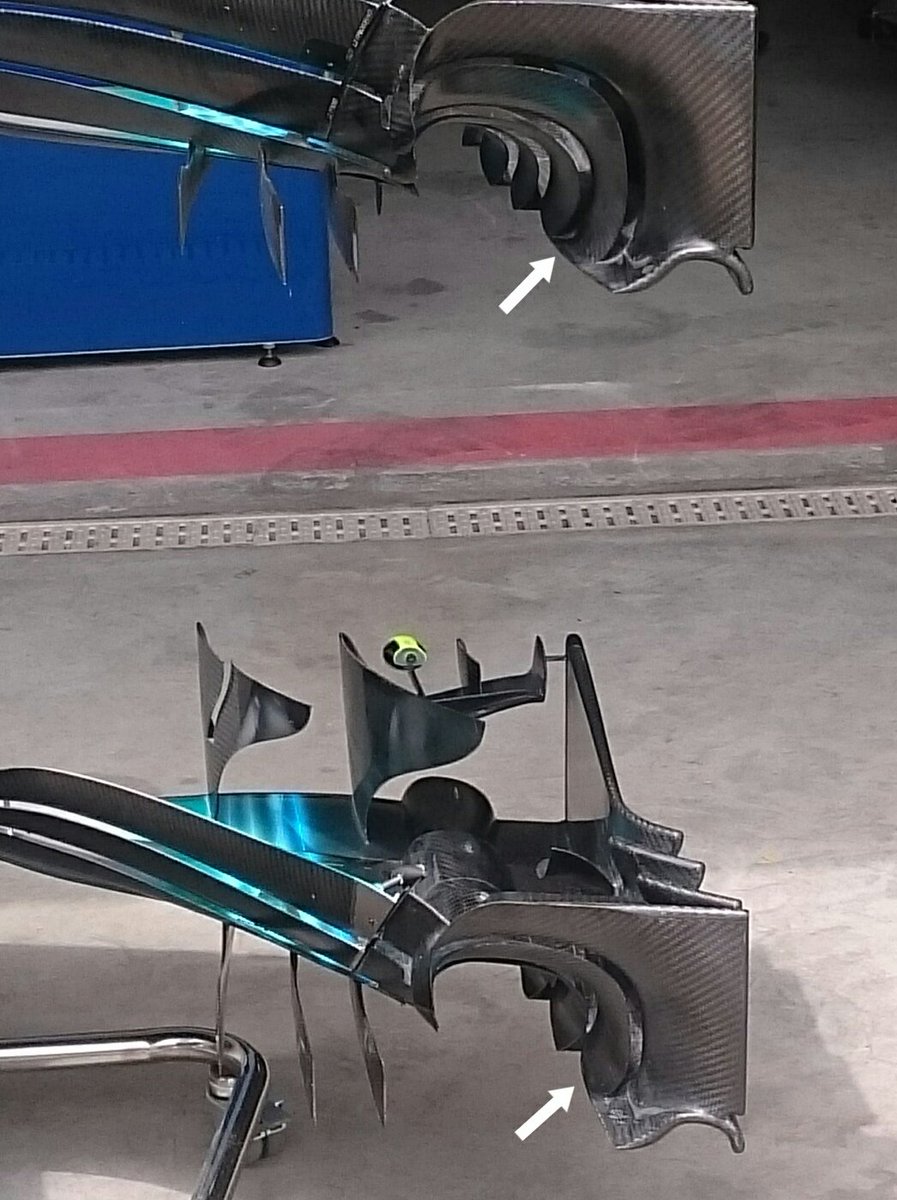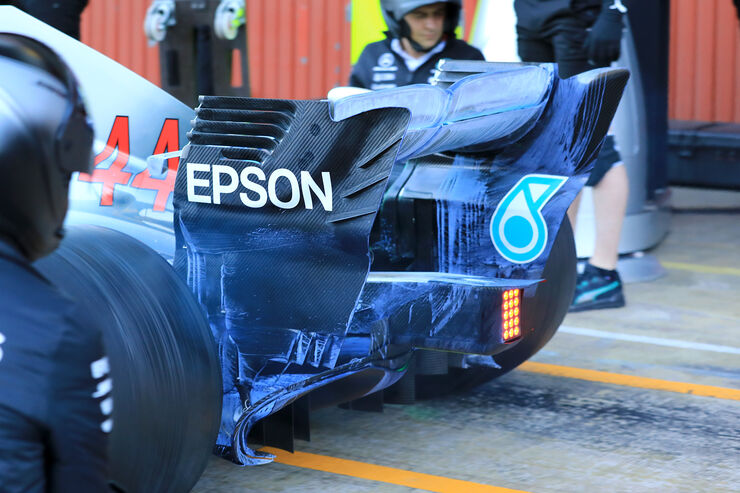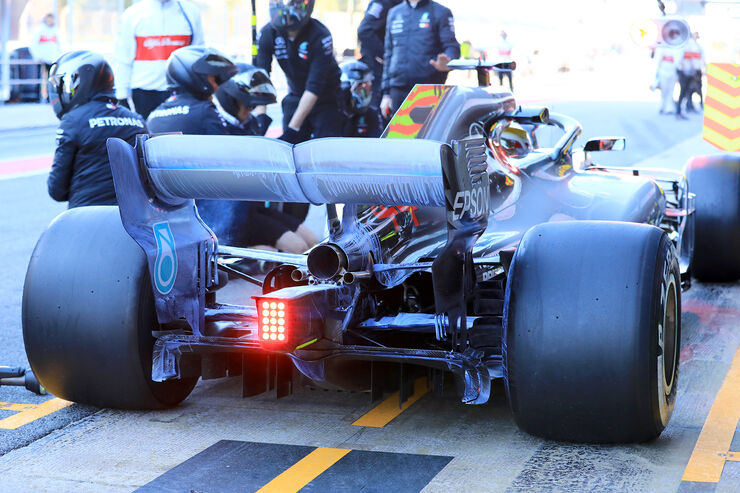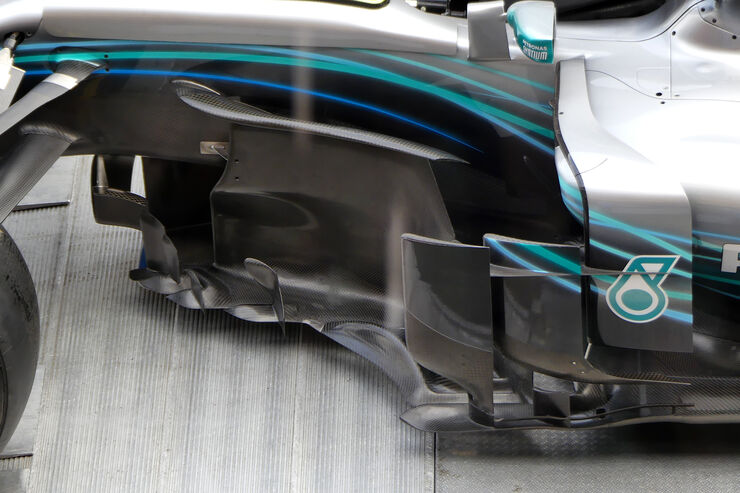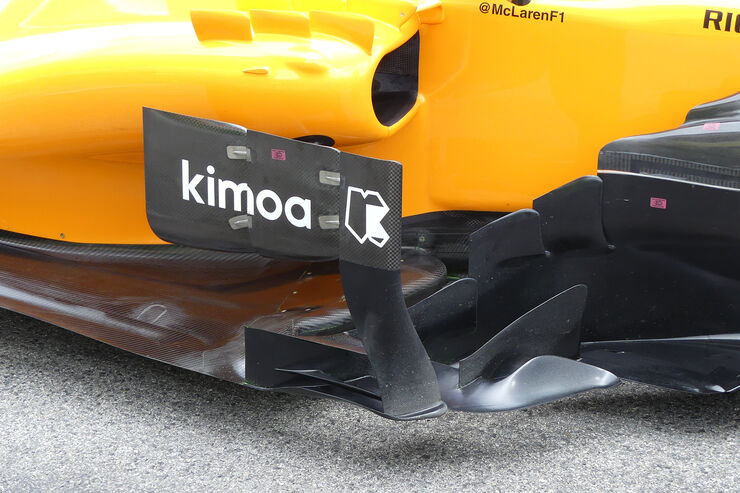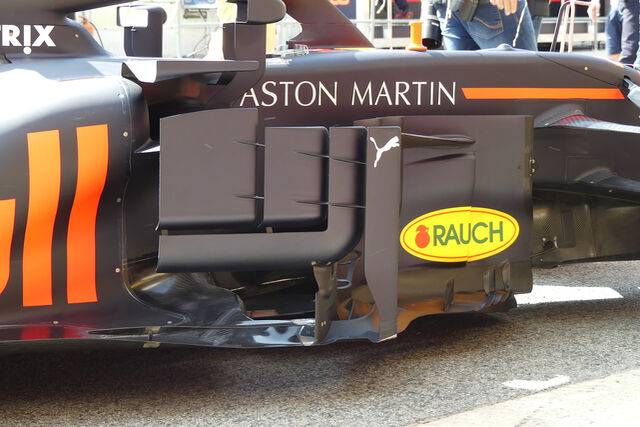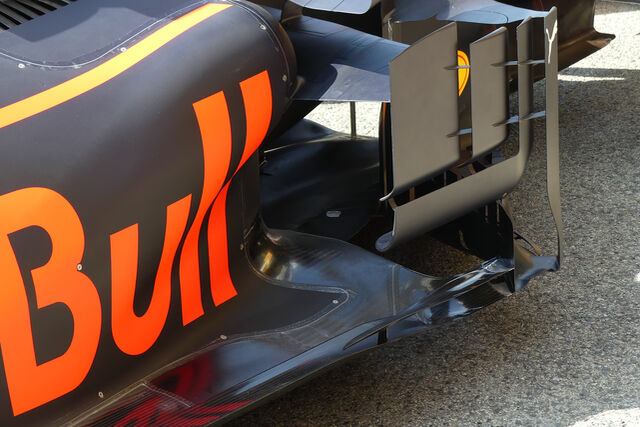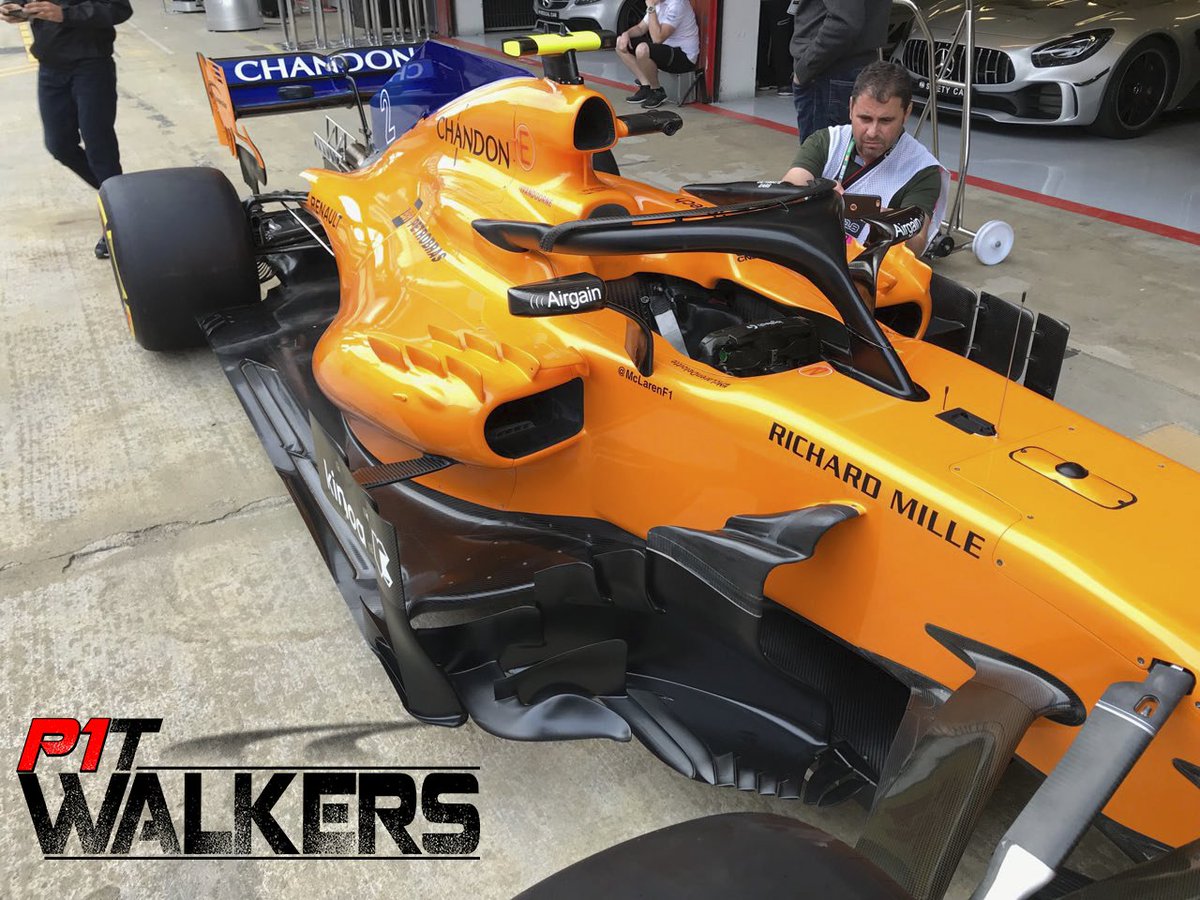
Remove the area circle/ in red, try to remake that area to resemble the part circled in yellow(ie a wing), minus the end plate, so that airflow can follow the contour of the bargeboard. .3 second gain?
It seems to work for these guys.
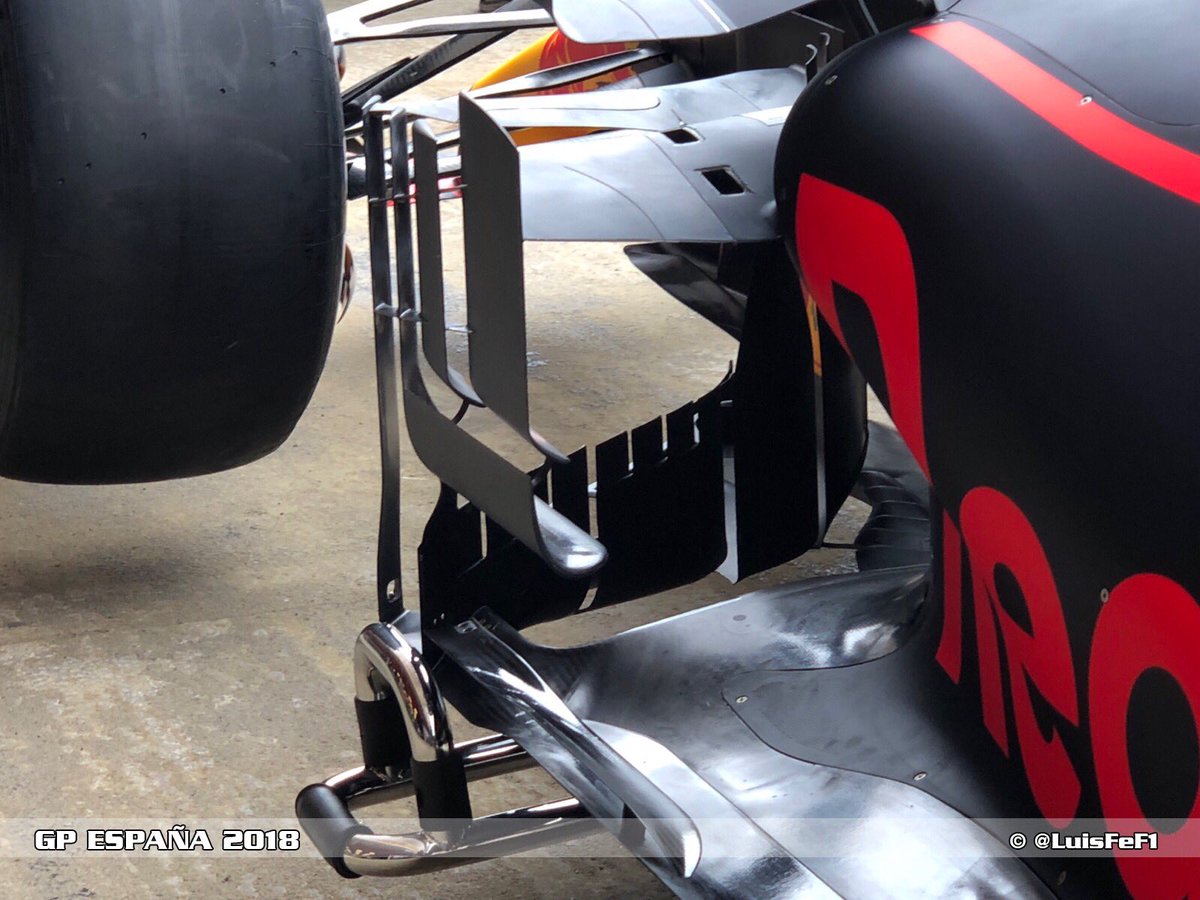

The teams that have that vertical plate like the McLaren are all slow and draggy cars. The McLaren, the Renault, Williams, all have that vertical plate, all the teams that streamlined that area, and tried to turn it into as much wing as possible are the fastest cars on the grid.
Sure it's a compromise, you could send more air to the back of the car using the McLaren way, but it adds drag, and what the other teams are doing ultimately brings a net gain in downforce. The small vertical vortex generators channel airflow in that region, which works much better than a vertical plate as it avoids any transient flow stagnation.




